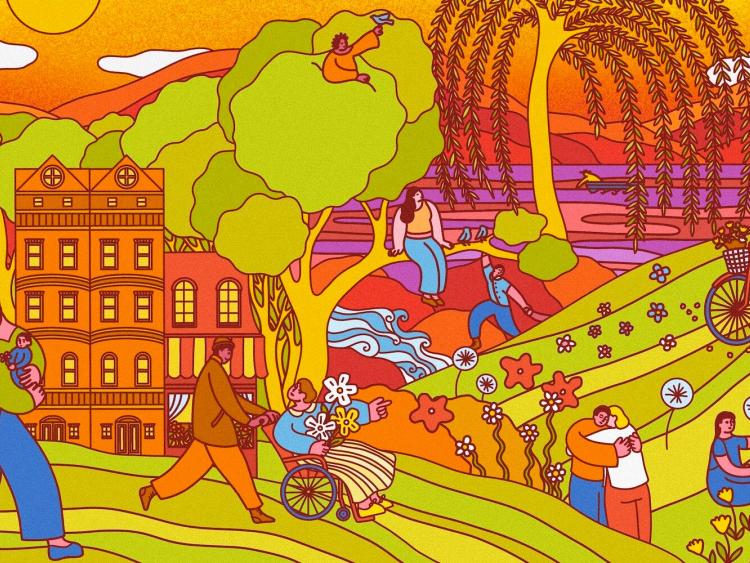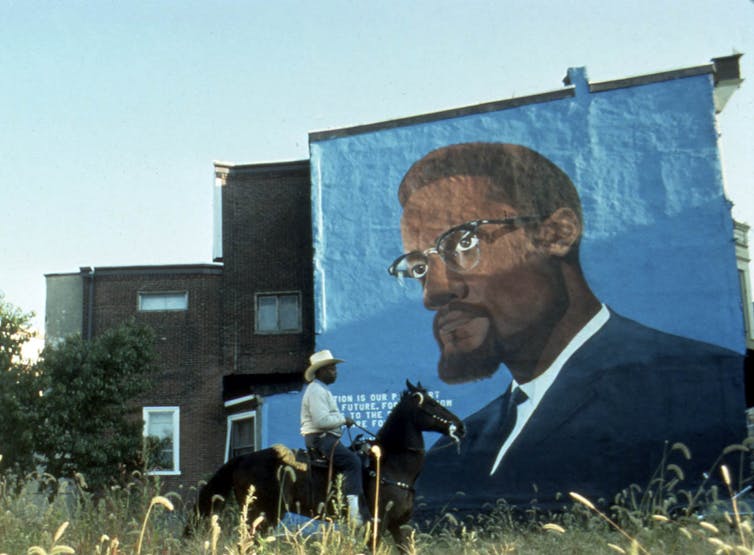Thursday Open Thread ~ "What are you reading?" edition

Associate Professor of Mechanical Engineering Tahira Reid leads a lab focused on human-centered design. Over her career, she’s gone outside the “traditional engineering box” and integrated compassion for the users of products and services into the design process – what she and colleagues refer to as “compassionate design.” She has also leveraged her insights as a Black woman in mechanical engineering in her work. Together, these considerations led to the development of a compassionate design framework that helps engineers think critically about their design decisions and, in her case, an investigation of how heat from flat-irons can damage curly hair.
In this interview, Reid describes how her personal experiences led her to focus on the human aspects of engineering, and why she believes a focus on people’s problems, combined with an engineering mindset, leads to more innovative products and services.
Many Americans think of cremation happening within an enclosed, mechanized structure, but most Indian crematoriums, known as “shmashana” in Hindi, are open-air spaces with dozens of brick-and-mortar platforms upon which a body can be burned on a pyre made of wood.Hindus and Sikhs will dispose of the remaining ashes in a river. Many shmashana are therefore built near the banks of a river to allow for easy access, but many well-off families often travel to a sacred city along the banks of the river Ganges, such as Hardiwar or Benares, for the final rituals. Jains – who have traditionally given significant consideration to humanity’s impact on the environmental world – bury the ashes as a means to return the body to the Earth and ensure they do not contribute to polluting rivers.
The workers who run shmashana often belong to the Dom ethnicity and have been doing this work for generations; they are lower caste and subsequently perceived as polluted for their intimate work with dead bodies.
The act of cremation has not always been without controversy. In the 19th century, British colonial officials viewed the Indian practice of cremation as barbaric and unhygienic. But they were unable to ban it given its pervasiveness.
However, Indians living in the United Kingdom, South Africa and Trinidad often had to fight for the right to cremate the dead in accordance with religious rituals because of the mistaken and often racist belief that cremation was primitive, alien and evironmentally polluting.
Indians are forced to change rituals for their dead as COVID-19 rages through cities and villages

When high school students get into the habit of revising their writing, it has a positive impact on the quality of their work.
Despite the proven benefits of revision, students often resist making changes to the initial versions of what they wrote – because it requires additional effort. Or, if they do revise, they only do it in a mediocre way.
Finding ways to motivate students to revise their writing is crucial given that only 27% of 12th graders in the U.S. write at a level that is “proficient.” Proficiency in writing refers to correct spelling and grammar, logical presentation of ideas and appropriate use of details and evidence.
Learning how to revise one’s writing is something that will serve students well in a variety of ways. Research shows that while writing is an effective way to help students learn content in different subject areas, revision helps them to develop a deeper conceptual understanding of the topic on which they are writing.
Here’s why students don’t revise what they write – and why they should
Photographer Ron Tarver grew up in Fort Gibson, a small town in Oklahoma where horses, cattle and Wrangler jeans were embedded into the rhythms of everyday life. His grandfather was a cowboy admired for his roping abilities, and many of his family members owned ranches in the area.
But he wanted, he told me, “to get away from horses,” and in 1983, he landed a job as a staff photojournalist at the Philadelphia Inquirer, where he found himself drawn to a range of subjects, from storefront churches to star jump-ropers.
Then, in the early 1990s, he photographed North Philadelphia’s drug culture, spending periods of time living in heroin dens and crack houses. Burned out from the despairing subject matter, he decided that for his next undertaking, he wanted to do something that would lift his spirits.
Sometimes he’d be walking around in the park, and he’d see a guy come around the corner wearing a big cowboy hat, riding a horse.
“It was just so unexpected,” he recalled. In Oklahoma – sure, whatever. But in the city?
One day, he approached one of the men and asked him if he could do a story on them.
“Come up to the stables,” the man said, and with that invitation, Tarver gained access to Philadelphia’s urban riding clubs, one of which is featured in Netflix’s new film, “Concrete Cowboy.”
In an interview, which has been edited for length and clarity, Tarver, who is now a professor at Swarthmore College, explains how his photographs of Philadelphia’s urban riding clubs ended up becoming a broader project on the Black cowboy experience in America.
For Black cowboys – from inner-city Philly to small-town Texas – horses and riding are a way of life
Plants have the ability to develop interdependence, but also to avoid it when being connected could be damaging. Generally, plants are constantly communicating and engaged with other organisms in their ecosystems. But when these ongoing connections threaten to cause more harm than good, plants can exhibit a form of social distancing.
When conditions are good, most plants are networkers. The vast majority of plants have fungi that live on or within their roots. Together, the fungi and roots form structures known as mycorrhizae, which resemble a netlike web.
“We wanted to help people understand that abolition isn’t this sort of utopian ideal that is something that can never happen, it’s something that we do,” she said. “It’s actually a collection of practices. It’s not something that happens all at once, it’s something that we gather over time.”
MENNONITE CHURCH INTRODUCES CURRICULUM ON POLICE ABOLITION





Comments
Quite a range of topics
Thanks for posting this OT philly!
Compassionate Engineering
Cremation in India
Writing Revisions
Networking Plants
Urban Cowboys
Police Abolition
Each could be it's own essay.
All I could come up with is scrambled eggs
Have a good one everybody!
Zionism is a social disease
What interesting topics!
The Black urban cowboy thing is particularly interesting. I remember in my youth the segregation of our annual fair and rodeo. A white, then black parade; a night for whites at carnival, and a night for blacks; and the rodeos were also segregated. I lived within sight of the arena, could watch the rodeos. Those men and women were excellent athletes.
One of my young black clients is a horse trainer and competition roper. He literally makes his living that way.
I will find the time to see the documentary you offered this morning, and, as always, thank you for your OT.
"We'll know our disinformation program is complete when everything the American public believes is false." ---- William Casey, CIA Director, 1981
Lots of interesting information
I had known that plants communicate and share. I didn't know they also distance when safety makes that desirable. The soil and plants are connected. We are connected and dependent on them. But I think they are smarter than humans because they know and act on that knowledge. Humans mostly ignore that.
Good morning Philly, et. al. Thanks for the OT
Philly.
I found the following verbiage in the bit on students revising their writing to be verrry interesting:
[emphasis added].
There is a strange interaction between the proficiency criteria and the current weltanschauung, cultural practices and probably job demands too:
We don't directly teach logic as a part of the curriculum, pretty much never have.
We live in an evidence free society, witness all of our media.
When "evidence" is presented it is almost invariably fallacious, argumentum ad verecundiam, argumentum ad ignorantiam, ad hominem (both negative and positive), petitio principii and all the rest.
Semantic trickery and psychological manipulation, however, are widely used, both in so called "news" (and entertainment) and in advertising, propaganda and PR.
We have whole career paths like "influencer" and "YouTuber" that are at odds with concepts like logic and evidence, and, to some extent, ideas.
So, where is the pressure to use and apply those skills and talents, and where are he exemplars from which students are expected to learn them? Tweets? Raps? Ads?
be well and have a good one
That, in its essence, is fascism--ownership of government by an individual, by a group, or by any other controlling private power. -- Franklin D. Roosevelt --